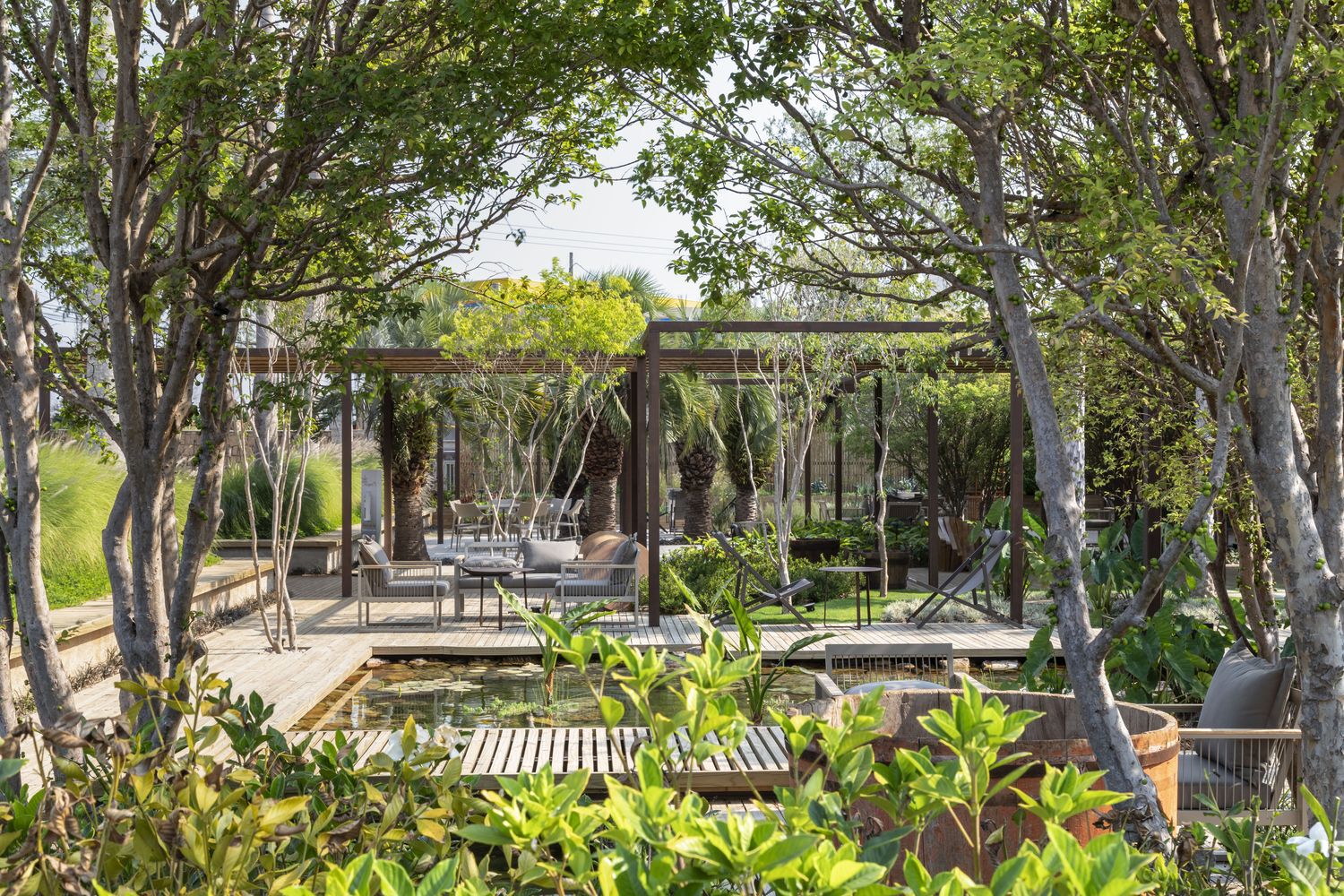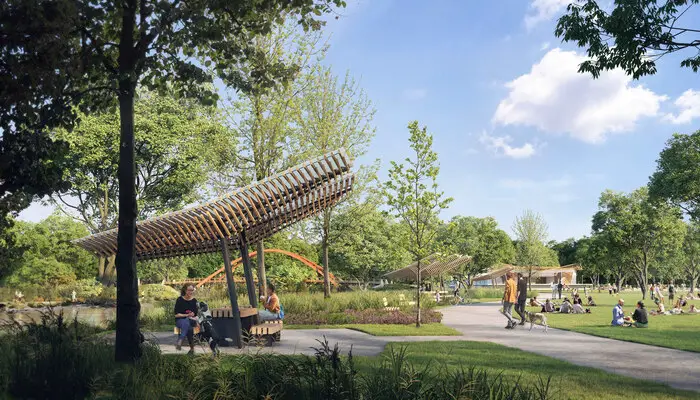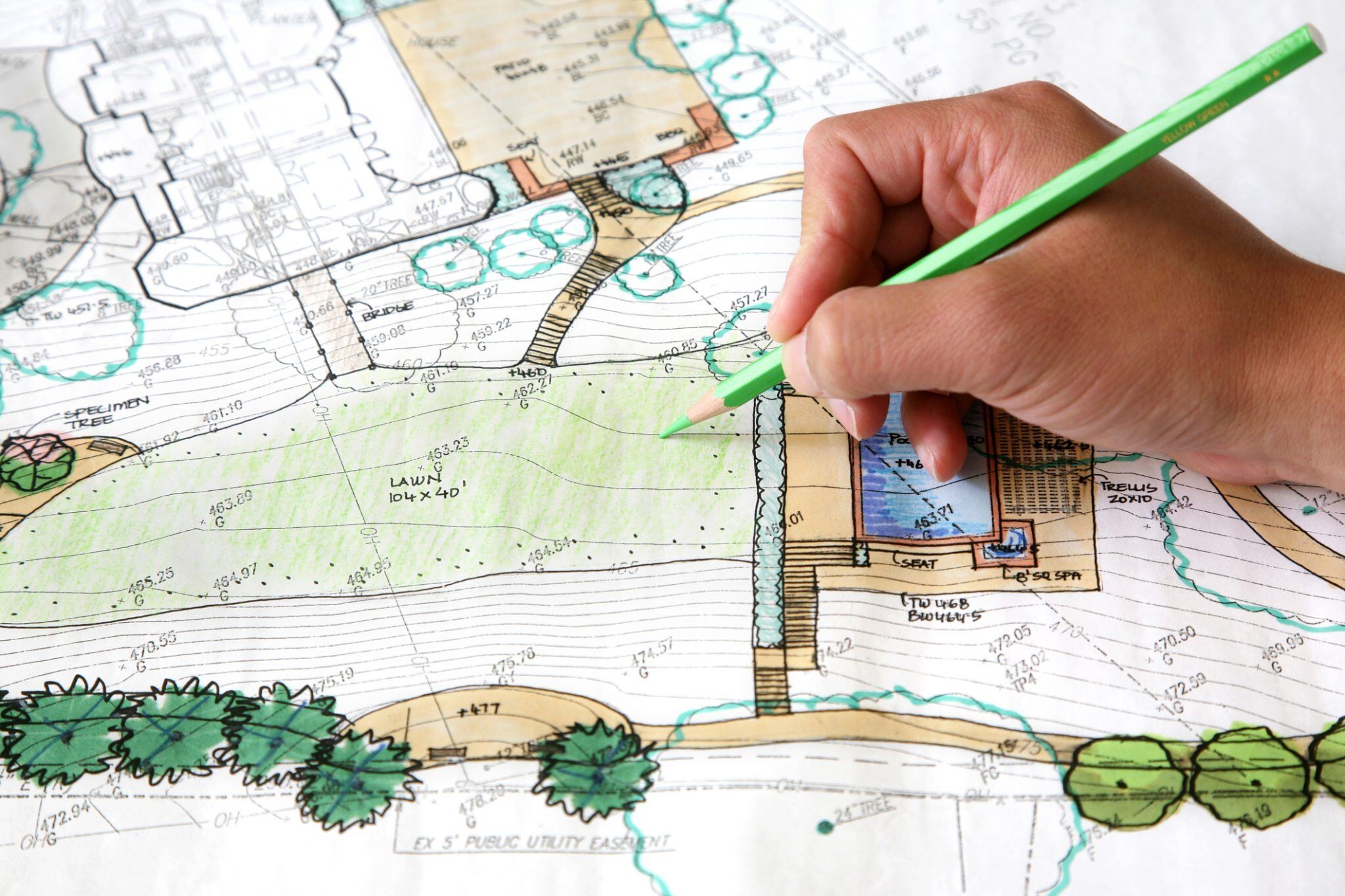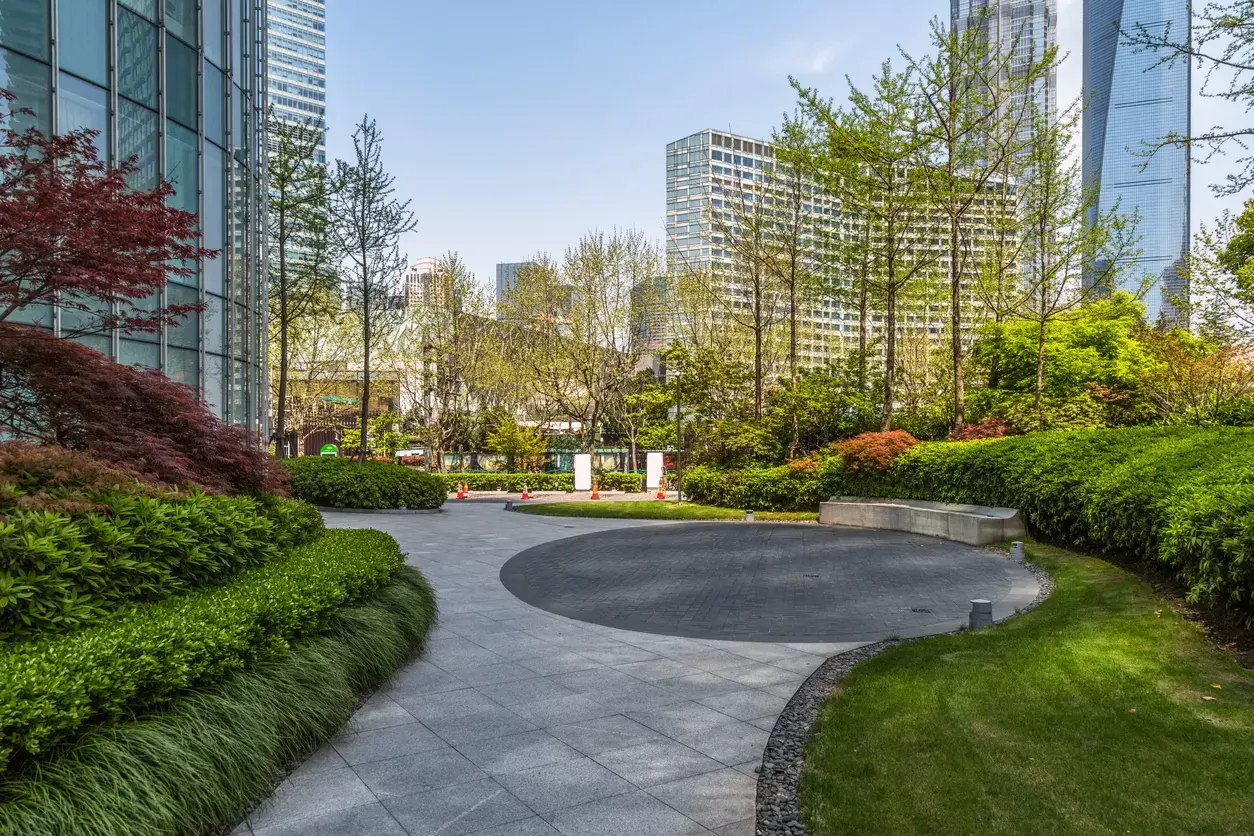How BIM for Landscape Design is Redefining the Future of Landscape Design
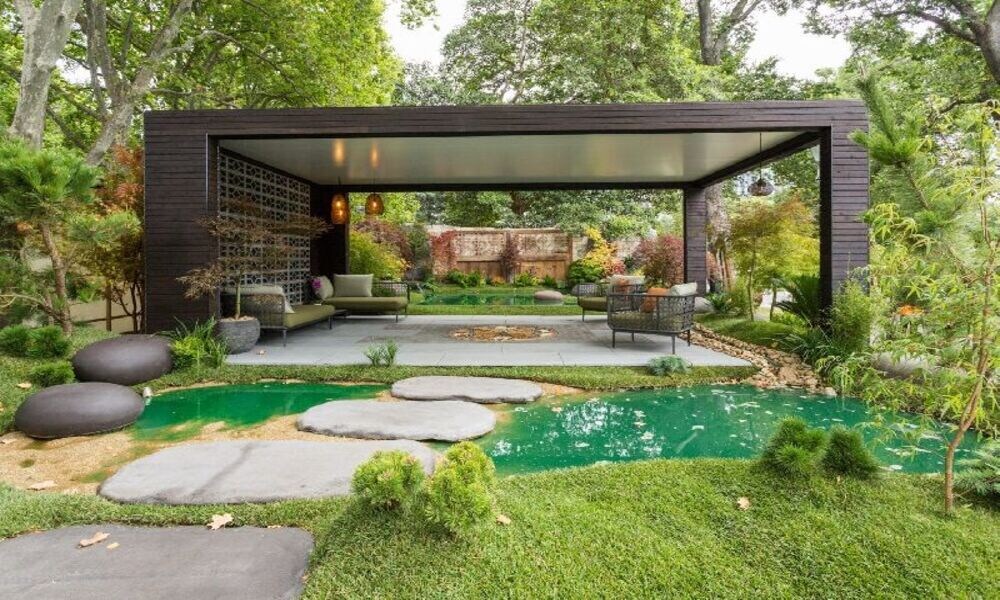
Table of Contents
Landscape designing is the process of conceptualising and build outdoor spaces through urban design or architectural interventions. On a city level, landscape design projects can entail the development of promenades, waterfronts, plazas, public squares, parks, and gardens. In the architectural domain, landscape design projects can include the creation of terraces, kitchen gardens, courtyards, and lawns. The purpose of landscape designing is to create functional and visually appealing outdoor environments that meet people’s needs while also enhancing the natural surroundings.
Who is a Landscape Designer?

A landscape designer is a planning professional who specialises in designing outdoor spaces. Landscape architects and designers are the professionals leading the process of landscape design in a project. They work in close association with project architects, contractors, and horticulture experts to create engaging, sustainable, and healthy outdoor environments.
1. Scope of Work of a Landscape Designer
The job of landscape designers is a comprehensive one that involves everything from design thinking to execution and project delivery. Their work involves:
Undertaking site analysis to evaluate soil conditions
Climatological assessment to gauge the sun and shade patterns
Studying the existing plants and wildlife in and around the assigned site.
Based on their findings, landscape architects create a layout with hardscape and softscape elements such as pathways, plantation beds, gazebos, trees and water features. They also oversee plant selection in accordance to the site, overall design and client requirements. Further, landscape architects oversee design execution and co-ordinate with contractors to ensure that the design is realised as per specifications.
2. Skills Required to be a Landscape Designer
Landscape designers must have a good understanding of human ergonomics, psychology, and interaction patterns. They should have mastery over construction methods, materials and local building codes and regulations. Additionally, landscape designers should have knowledge of plants, including their growth habits, cultural requirements, and maintenance needs. A sound knowledge of emerging technologies such as Building Information Modelling (BIM) and computational design can help landscape professionals improve the design and construction process.
3. Average Salary of a Landscape Designer
According to Glassdoor, the average base pay of a landscape designer in the United States is $50,799. However, the salary may vary depending on factors such as education, experience, location, and type of employer. Furthermore, freelance or self-employed landscape designers may have different earnings based on the size and scope of their projects.
How is BIM Helping Shape the Future of Landscape Design?

BIM for landscape designers has become an invaluable tool, allowing them to efficiently plan, visualize, and collaborate on projects in a digital environment. It is a new-age process supported by virtual tools and software that provide a digital representation of the physical and functional characteristics of a project. This allows professionals to design, test, and collaborate better.
Let’s have a look at how BIM is bringing about a paradigm shift in the field of landscape design.
1. Enhanced Visualisation
Bim for landscape designers can be used to test multiple design options in different environmental conditions. They can understand sun path, wind direction, neighbourhood development, and site ecology by creating detailed 3D models.
2. Improved Collaboration
BIM for landscape designers allow them to effectively collaborate with architects, engineers, contractors and other consultants by sharing the same model and data. This reduces errors, saves time, and leads to more innovative and creative designs.

3. Boost Design Efficiency
By using BIM, landscape designers can input material and construction specifications such as plant location, irrigation systems, and contours in the model. BIM for landscape designers can enable them to identify potential issues in the design thereby helping create space-efficient and functional outdoors.
4. Produce Accurate Estimation
BIM models can calculate the material requirements for a project which helps in generating precise Bill Of Quantities (BOQs). It can also account for any design changes, making it easier to adjust the estimation sheet accordingly.
5. Create Sustainable Designs
Landscape designers can evaluate the environmental impact of their projects by analysing BIM models on parameters such as water usage, waste generation, and energy consumption. This can help them reduce the carbon footprint of their design.
Applications of BIM for a Landscape Designer

BIM boasts an array of features that can make it easier for landscape designers to fabricate holistic outdoor environments. Below are some of the key applications of BIM for landscape designers.
1. Project Management
BIM can be used to track project progress, manage agency coordination, and keep up with the timelines. This helps designers to stay on top of deadlines, maintain quality of work and ensure that the project is delivered within budget.
2. Vegetative Selection
Landscape designers can use BIM to assess the appropriateness of various plant species for their site condition. They can evaluate vegetation suitability based on shade tolerance, water needs, and soil requirements.
3. Irrigation Layout
BIM for landscape designers can help ideate, evaluate and optimise irrigation systems. This ensures that plants receive the appropriate amount of water to remain healthy and vibrant over time.
4. Plantation Maintenance
The use of BIM in landscape design can help in devising pruning schedules, mapping fertilisation needs, outlining watering requirements. This information can help clients to maintain their outdoor space effectively, reducing the risk of plant failure and ensuring the longevity of the design.
5. Risk Mitigation
By using BIM. a landscape designer can identify potential risks such as drainage issues, soil erosion, and flooding. This can help designers to identify potential vulnerabilities and make changes to the design to improve its resilience.
Widely Used BIM Software in the Field of Landscape Designing

BIM can be an invaluable tool for creating engaging landscape designs where people love to relax and rejuvenate. Let’s take a deep dive into some of the most promising BIM for landscape designers.
1. AutoCAD Civil 3D
Developed by Autodesk, AutoCAD Civil 3D is an ideal choice for complex landscape projects. It is a powerful BIM software with features such as automated terrain modelling, hydrology and hydraulic analysis, and geospatial analysis.
2. Vectorworks Landmark
Vectorworks is a popular choice among landscape designers for its intuitive user interface and wide range of design tools. Its “Landmark module” includes features like site analysis, planting design, and irrigation design, as well as integration with GIS and BIM data.
3. Autodesk Revit
Revit for landscape architecture can help landscape designers benefit from its features like 3D modelling, automated documentation, and integration with other BIM software platforms.

Read: A BEGINNER'S GUIDE TO REVIT: EVERYTHING YOU NEED TO KNOW
4. Lumion
Lumion is a visualisation software that allows landscape designers to create photorealistic renderings of their designs. With features like 3D modelling, real-time rendering, and a library of high-quality materials and textures.
5. Plant Factory
This software is an advanced 3D vegetation modelling tool that allows landscape designers to create realistic, high-quality 3D models of plants and trees. It has an extensive library of plant species, which can be customised to meet specific design requirements.
6. Land F/X
Land F/X is specifically designed for landscape architects and designers. It provides a range of tools and features that allow designers to create detailed site plans, irrigation plans, planting plans, and other necessary documentation.
Top BIM Online Courses for Landscape Design
BIM for landscape designers is becoming an essential tool for curating healthier green spaces. Therefore, landscape designers need to have a thorough understanding of BIM principles and techniques. Mentioned-below are some of the most professionally-relevant courses that landscape designers can invest in.
1. BIM Professional Course by Novatr
BIM Professional Course offered by Novatr is designed to provide an in-depth understanding of BIM, including its application in landscape design. It covers topics such as BIM modelling, tools, workflows, and implementation strategies. This course is ideal for those who want to become BIM experts and advance their careers in landscape design.

2. BIM Fundamentals for Landscape Architecture
Offered by Landscape Architecture Continuing Education System (LA CES), this course covers the fundamentals of BIM for landscape designers. Its curriculum is tailored for professionals who have some experience with BIM. It covers advanced BIM concepts and workflows specific to landscape design.
3. Vectorworks Landmark
Vectorworks offers its own courses for Landmark, a BIM software specifically designed for landscape designers. This course covers topics such as terrain modelling, planting design, and site analysis.
In Conclusion
Powered by BIM, the future of landscape design looks promising. Landscape designer can take informed decisions and design spaces that better adapt with the changing dynamics of the natural environment. Therefore, professionals must continue to upskill themselves and leverage this technology's full potential. It will help them stay competitive and relevant in the field thereby ensuring a sustainable career.
Are you interested in exploring a course in BIM for landscape designers? If yes, then join us in the BIM Course.


 Thanks for connecting!
Thanks for connecting!



.png)
.jpg)
